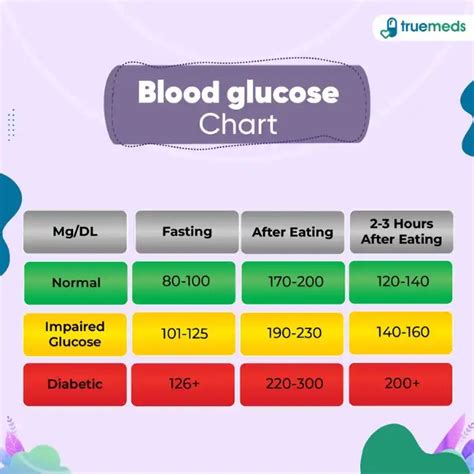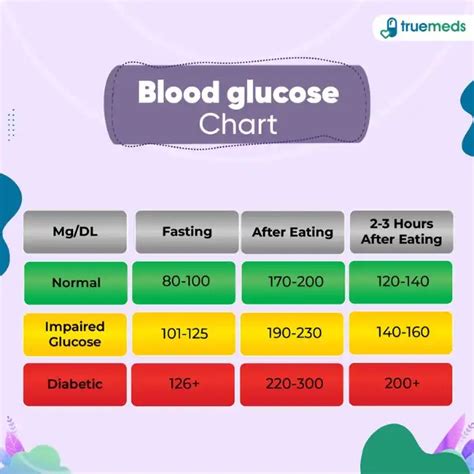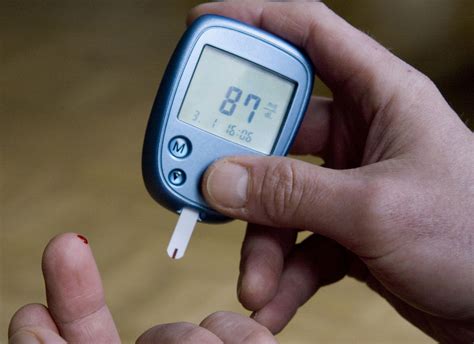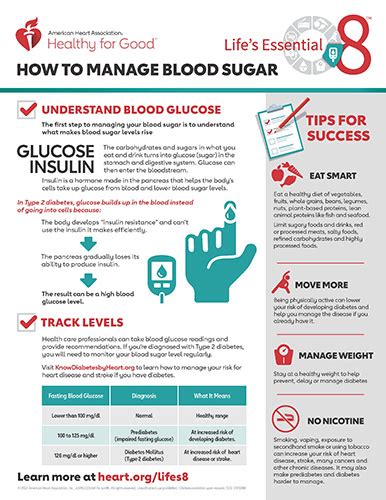Intro
Learn about the normal blood glucose range, including target levels, glucose monitoring, and maintaining healthy blood sugar levels to prevent diabetes and related complications.
Maintaining normal blood glucose levels is crucial for overall health and well-being. Blood glucose, also known as blood sugar, is the primary source of energy for the body's cells. When blood glucose levels are within a normal range, the body functions properly, and the risk of developing chronic diseases like diabetes, heart disease, and stroke is reduced. In this article, we will delve into the importance of normal blood glucose range, its benefits, and the mechanisms that regulate blood sugar levels.
The normal blood glucose range is a topic of great interest, especially for individuals who are at risk of developing diabetes or those who are already managing the condition. Understanding what constitutes a normal blood glucose range and how to maintain it is essential for preventing complications and ensuring optimal health. With the increasing prevalence of diabetes worldwide, it is more important than ever to prioritize blood glucose management and adopt healthy lifestyle habits.
The human body has a complex system for regulating blood glucose levels, involving the pancreas, liver, and other organs. When we eat, our body breaks down carbohydrates into glucose, which is then absorbed into the bloodstream. The pancreas releases insulin, a hormone that facilitates the entry of glucose into cells, where it is used for energy production or stored for future use. In individuals with normal blood glucose levels, this process occurs smoothly, and blood sugar levels remain within a healthy range. However, in people with diabetes or prediabetes, the body's ability to regulate blood glucose is impaired, leading to high blood sugar levels and potentially serious health complications.
Understanding Normal Blood Glucose Range

Normal blood glucose range is typically defined as a fasting blood glucose level between 70 and 99 mg/dL (milligrams per deciliter) and a postprandial (after meal) level below 140 mg/dL. These values may vary slightly depending on the laboratory or testing method used. It is essential to note that blood glucose levels can fluctuate throughout the day, influenced by factors such as diet, physical activity, and stress levels. Regular monitoring of blood glucose levels is crucial for individuals with diabetes or those at risk of developing the condition, as it helps identify patterns and trends, enabling timely interventions and adjustments to treatment plans.
Factors Affecting Blood Glucose Levels
Several factors can impact blood glucose levels, including: * Diet: Consuming high-carbohydrate or high-sugar foods can cause blood glucose levels to rise. * Physical activity: Regular exercise can help lower blood glucose levels and improve insulin sensitivity. * Stress: Stress can raise blood glucose levels by stimulating the release of stress hormones like cortisol and adrenaline. * Sleep: Poor sleep quality and duration can disrupt blood glucose regulation and contribute to insulin resistance. * Certain medications: Some medications, such as steroids and certain psychiatric medications, can increase blood glucose levels.Benefits of Maintaining Normal Blood Glucose Range

Maintaining a normal blood glucose range offers numerous benefits, including:
- Reduced risk of chronic diseases: High blood glucose levels are a significant risk factor for developing conditions like diabetes, heart disease, and stroke.
- Improved energy levels: When blood glucose levels are within a normal range, the body's cells receive the energy they need to function properly, leading to increased energy and vitality.
- Enhanced cognitive function: Normal blood glucose levels support optimal brain function, improving concentration, memory, and mood.
- Better weight management: Maintaining a healthy blood glucose range can help with weight management, as it reduces the likelihood of insulin resistance and metabolic syndrome.
Strategies for Maintaining Normal Blood Glucose Range
To maintain a normal blood glucose range, consider the following strategies: * Eat a balanced diet: Focus on whole, unprocessed foods like vegetables, fruits, whole grains, lean proteins, and healthy fats. * Stay hydrated: Drink plenty of water throughout the day to help regulate blood glucose levels. * Exercise regularly: Aim for at least 150 minutes of moderate-intensity aerobic exercise or 75 minutes of vigorous-intensity aerobic exercise per week. * Manage stress: Engage in stress-reducing activities like yoga, meditation, or deep breathing exercises. * Get enough sleep: Aim for 7-9 hours of sleep per night to help regulate blood glucose levels and support overall health.Monitoring Blood Glucose Levels

Regular monitoring of blood glucose levels is essential for individuals with diabetes or those at risk of developing the condition. There are several ways to monitor blood glucose levels, including:
- Fasting blood glucose tests: Measure blood glucose levels after an overnight fast.
- Postprandial blood glucose tests: Measure blood glucose levels after meals.
- Continuous glucose monitoring (CGM): Use a small device to track blood glucose levels throughout the day.
- Hemoglobin A1c (HbA1c) tests: Measure average blood glucose levels over the past 2-3 months.
Interpreting Blood Glucose Results
When interpreting blood glucose results, consider the following: * Fasting blood glucose levels: + Normal: 70-99 mg/dL + Prediabetes: 100-125 mg/dL + Diabetes: 126 mg/dL or higher * Postprandial blood glucose levels: + Normal: below 140 mg/dL + Prediabetes: 140-199 mg/dL + Diabetes: 200 mg/dL or higher * HbA1c levels: + Normal: below 5.7% + Prediabetes: 5.7-6.4% + Diabetes: 6.5% or higherManaging Blood Glucose Levels

Managing blood glucose levels requires a comprehensive approach that incorporates lifestyle modifications, medication (if necessary), and regular monitoring. The following strategies can help:
- Develop a personalized meal plan: Work with a registered dietitian or healthcare provider to create a meal plan that takes into account individual nutritional needs and health goals.
- Engage in regular physical activity: Aim for at least 150 minutes of moderate-intensity aerobic exercise or 75 minutes of vigorous-intensity aerobic exercise per week.
- Take medication as prescribed: If medication is necessary, take it as directed by a healthcare provider.
- Monitor blood glucose levels regularly: Use a glucometer or CGM device to track blood glucose levels and adjust treatment plans as needed.
Common Medications for Managing Blood Glucose Levels
Common medications for managing blood glucose levels include: * Metformin: A first-line medication for type 2 diabetes that helps improve insulin sensitivity and reduce glucose production in the liver. * Sulfonylureas: Medications that stimulate the pancreas to produce more insulin. * Meglitinides: Medications that stimulate the pancreas to produce more insulin and are often used in combination with other medications. * Thiazolidinediones: Medications that improve insulin sensitivity and reduce glucose production in the liver.Preventing Complications

Preventing complications is a critical aspect of managing blood glucose levels. The following strategies can help:
- Regular health check-ups: Schedule regular health check-ups with a healthcare provider to monitor blood glucose levels, blood pressure, and lipid profiles.
- Foot care: Practice good foot care to prevent foot ulcers and other complications.
- Eye care: Schedule regular eye exams to detect and manage diabetic retinopathy.
- Kidney care: Monitor kidney function and manage kidney disease if present.
Common Complications of Unmanaged Blood Glucose Levels
Common complications of unmanaged blood glucose levels include: * Diabetic retinopathy: Damage to the blood vessels in the retina that can lead to blindness. * Diabetic nephropathy: Damage to the kidneys that can lead to kidney failure. * Diabetic neuropathy: Damage to the nerves that can lead to numbness, tingling, and pain. * Foot ulcers: Open sores on the feet that can lead to infection and amputation.What is the normal blood glucose range?
+The normal blood glucose range is typically defined as a fasting blood glucose level between 70 and 99 mg/dL and a postprandial level below 140 mg/dL.
How can I maintain a normal blood glucose range?
+To maintain a normal blood glucose range, eat a balanced diet, stay hydrated, exercise regularly, manage stress, and get enough sleep.
What are the benefits of maintaining a normal blood glucose range?
+Maintaining a normal blood glucose range offers numerous benefits, including reduced risk of chronic diseases, improved energy levels, enhanced cognitive function, and better weight management.
In conclusion, maintaining a normal blood glucose range is crucial for overall health and well-being. By understanding the importance of normal blood glucose range, its benefits, and the mechanisms that regulate blood sugar levels, individuals can take proactive steps to manage their blood glucose levels and prevent complications. We encourage readers to share their experiences and tips for managing blood glucose levels in the comments below. Additionally, we invite readers to share this article with friends and family who may benefit from this information. By working together, we can promote healthy blood glucose management and reduce the risk of chronic diseases.
